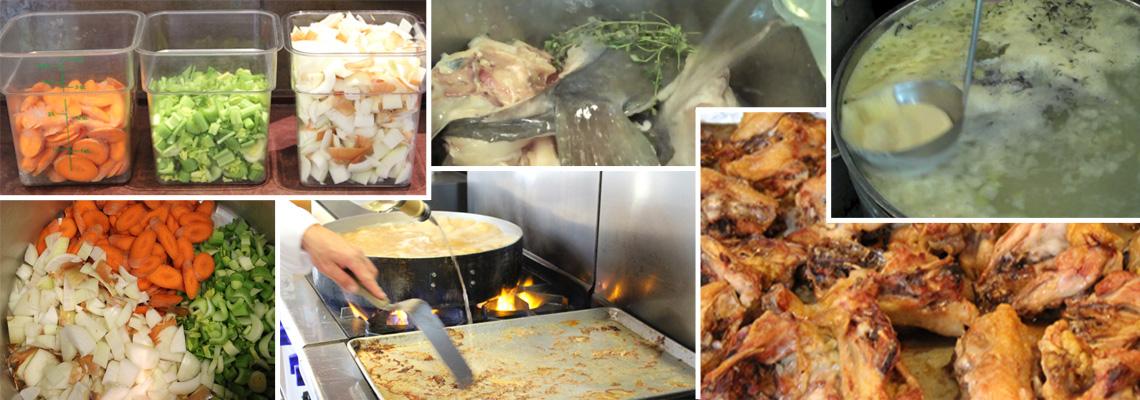In part two of our culinary stock's podcast, we discuss the proper technique and approach to making chicken, vegetable, and fish stock. It is highly recommend that you listen to part one of our stock making series first.
Details
Download & Listen To More Episodes
The Stella Culinary School Podcast is our core curriculum and the most effective method to gain knowledge and take your cooking to the next level. You can view and listen to all episodes by visiting the Stella Culinary School Podcast Index.
Subscribe to Podcast
There are 14 Comments

It's http://khymos.org/. I'll
It's http://khymos.org/. I'll update the show notes.

Not only is it acceptable to
Not only is it acceptable to use red wine in a veal stock, it's pretty common. The reason why I don't recommend it in mine is because it usually gets lost in the mix. When you make a veal stock, you rarely use it as is. You're constantly reducing and reinforcing. If you want a red wine flavor, I tend to recommend adding it more towards the end of the sauce making process, like shown in our pan sauce video.
Vegetable stock on the other hand isn't usually reduced after making because you'll only loose the volatile aromas of the vegetables in the stock. The addition of the white wine helps to add a little flavor to an otherwise more subtle and somewhat bland stock.
I so appreciate this site!
I so appreciate this site! I'm so excited about what I'm going to learn. My question is why do you not add salt to any of the stocks?

Hi Skillet, welcome to Stella
Hi Skillet, welcome to Stella Culinary!
The reason why salt isn't added to stock is because it is used as a base and usually reduced to further concentrate the flavors. If you add salt before reducing your stock, you run the risk of your finished sauce becoming overly salty. You can always add more salt when needed, but you can never take it out.
The standard procedure is to make your sauce or soup, add any additional flavors required for that specific recipe, taste for seasoning, and season to taste right before serving. This ensures that all your sauces have the proper flavor when they hit the plate.
Jacob

@ Rawali, Glad you're
@ Rawali,
Glad you're enjoying the site. A game stock can be made with the exact same method as the veal stock. A lot of people (including myself) will also add some extra spices to help compliment the "gamey" flavor of the stock.
For game birds, I like to add grains of paradise, star anise, cloves and sometimes vanilla bean (depending on the final application). I'll usually add these spices during the reduction/reinforcing step, but you can also add them during the actual stock making process as well.
For elk and venison stock, juniper berries and brandy are a nice addition as well as a hint of rosemary and fresh mint.
All of these flavors can be added in addition to the aromatics already called for in the veal stock recipe.
Game stocks can be made with any of the bones, although the larger, structural bones (mainly leg and neck) will contain more collagen which will give your stock better body. Also, add some scrap pieces of meat or "trim" to give the stock a better, meaty flavor.

What you're looking to make
What you're looking to make is called a consomme. A raft is created using ground meat, finely juliened mirepoix, and is mixed with egg. The stock is gently simmered, the raft floats to the top, and during the simmering process, the stock filters through the raft and clarifies.
Check out the Consomme and Clarification with Egg Whites section in On Food and Cooking by McGee, pg. 601.
If you have the Escoffier Cook Book, just look up Consomme in the index. There are a tone of recipes.

@ Greenbake, Yes. No matter
@ Greenbake,
Yes. No matter what type of clarification technique you use, there will always be some flavor loss.
So for a meat based consomme, I prefer the traditional clarification method because the raft will reinforce the flavor.
Agar and gelatin clarification are both prefered when clarifying fresh juices that would loose their flavor when simmered. So something like a lime, watermelon, or tomato consomme, would be better off with an agar or gelatin clarification.

I agree about he dashi. What
I agree about he dashi. What do you mean by "Master Stock?"





